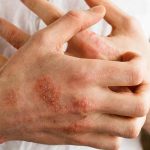

Seasonal change is an annual geographical phenomenon in nature. In India, June to December is the monsoon period. Nature comes not only with rain but also causing seasonal diseases. The most common infectious disease is fever with respiratory problems. Influenza and dengue are very common in monsoon period.
What is infectious disease?
Human body gets disease after the successful entry of certain disease causing microorganism in to the body. Infection is a process, in which a microorganism enters, establishes itself, multiplies and invades the human body resulting in disease. Types of infection include bacterial, fungal, viral, protozoan, parasitic and so on.
Reservoir/ Source
The starting point of an infectious disease is called as reservoir / source of infection. It is a natural habitat in which the organism lives and multiplies. Typically, the diseases are caused by viruses or tiny parasites. Mosquito control is a vital public-health practice throughout the world and especially in the tropics because mosquitoes spread many diseases. For example, a mosquito that bites an infected human or animal can pick up a virus along with the blood meal.

Mode of transmission
Microorganisms may be transmitted from the reservoir /source to a susceptible host (Human) in different ways.
Contact – Infection may be transmitted by direct or indirect contact. Spread directly through skin and Mucosa of infected persons (Unclean hands & Kissing) and indirectly through objects (Cloths, Toys and other inanimate objects).
Inhalation– The microorganisms are shed into the environment by patients in secretions from nose and throat during sneezing and coughing. Respiratory infections are acquired through this route.
Air-borne – Larger droplets remain suspended in air for particular period which act as a source of infection. Influenza virus transmitted chiefly in this route. Many common infections can spread by airborne transmission at least in some cases, including: Anthrax (inhalational), Chickenpox, Influenza, Measles, Smallpox, Cryptococcosis, and Tuberculosis.
Inoculation– Pathogens may be inoculated directly into the skin. Dengue causing mosquitoes spread in this route. Diseases transmitted by mosquitoes include malaria, dengue, chikungunya, yellow fever, filariasis, tularemia, dirofilariasis, Japanese encephalitis, Ross River fever, Barmah Forest fever, and Zika fever, as well as newly detected Keystone virus and Rift Valley fever.
Who are the susceptible persons?
Children of below five years and elderly people are more prone for these types of infections. Because children have under developed immune system and geriatric people have diminished defence system. Prognosis is also not good in people of above category. In people with a genetic predisposition, the risk of disease can depend on multiple factors in addition to an identified genetic change/ mutation.
Why prevention is advised than treatment?
Seasonal fevers like Influenza and Dengue are primarily due to virus origin and vary its surface in every year. So vaccination failed very often. Prevention is the best treatment for these seasonal fevers.
15 Foods that protect us from fever
- Chicken Soup – Natural decongestant blocks cells causing cough & stuffy nose
- Broths – Delicious and nutritious way to stay hydrated
- Garlic – Fights bacteria, viruses and stimulates immune system
- Coconut Water – Provides fluids & electrolytes to stay hydrated while sick
- Hot Tea – Black tea can decrease the growth of bacteria in throat
- Honey – Relieves coughing in children over 12 months of age
- Ginger – Relieves nausea. It has anti-inflammatory and antioxidant effect
- Spicy Foods – Contains capsaicin, which can help break up mucus
- Bananas – Good source of calories and nutrients. Relieves nausea and diarrhea
- Oatmeal – Stimulates your immune system and improves blood sugar control
- Yogurt – Contains probiotics, helps you get sick less often and get better faster
- Certain Fruits – Contains flavonoids called anthocyanins that fights pathogens
- Avocados – Decrease inflammation and stimulate the immune system
- Leafy, Green Vegetables – Full of fiber and nutrients that you need while sick.
- Salmon – Contains omega-3 fatty acids & vitamin D, boost immune function.
Prevention
- Frequent hand washing itself restricts fifty percent of spreading of microbes. Use an alcohol-based hand sanitizer.
- Avoid crowded areas and Stay away from people who are sick with the flu
- Try not to touch your nose, mouth, or eyes. This helps keep germs from spreading.
- Watch rain water stagnating places because dengue spreading mosquitoes breed only in good water. Avoid getting wet in the rain
- Clean surfaces and objects that may have flu germs on them, like doorknobs. Use hot, soapy water or a household cleaner.
- Wear full sleeves in night and prevent from mosquito bites.
How to protect in Natural way?
During fever season, we keep our immunity in full strong. Govt of Tamilnadu educates the public and issues treatment protocols. Few drugs recommended by govt are
- Nilavembu kudineer – Instant preparation from Dr.JRK’s
- Adadhodai kudineer– Instant preparation from Dr.JRK’s
- Kabasura kudineer– Instant preparation from Dr.JRK’s
- Papaya leaf juice
We should take the drugs only under the supervision of physician.
- Siddha system of medicine deals in detail about modifications in diet, lifestyle and daily routines during these seasons to prevent the diseases under the heading of Kala ozhukkam (Seasonal conduct).
- We follow the above said principles and lead a disease free life in natural way during the seasonal change
- Siddha system of medicine deals in detail about modifications in diet, lifestyle and daily routines during these seasons to prevent the diseases under the heading of Kala ozhukkam (Seasonal conduct).
- Let us follow the above said principles and lead a disease free life in natural way during the seasonal change.
http://www.jrkresearch.com/nilavembu-kudineer.php










